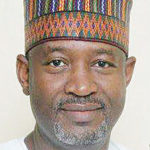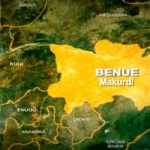World Bank, IMF Want Review of Acquisition of Oceanic Bank, Others
 Unless for a last minute U-turn, the Federal Government may call a total review of the policy guidelines used by the former Governor of Central Bank of Nigeria (CBN) in 2009 to take over six Nigerian commercial banks. If government takes this step, it would be leaning to the letter it received from the World Bank and the International Monetary Fund (IMF), following a complaint by some Nigerian shareholders.
Unless for a last minute U-turn, the Federal Government may call a total review of the policy guidelines used by the former Governor of Central Bank of Nigeria (CBN) in 2009 to take over six Nigerian commercial banks. If government takes this step, it would be leaning to the letter it received from the World Bank and the International Monetary Fund (IMF), following a complaint by some Nigerian shareholders.
The two international bodies according to a Presidency source in a letter they forwarded to the President Goodluck Jonathan, dated March 23rd 2014 and signed by Christine Lagarde of IMF and Dr. Jim Yona Kim, of World Bank respectively had requested for a review of the process.
The joint letter stated that it had earlier received a complaint to this effect by the shareholders of banks in Nigeria. “It would therefore by appropriate for a review of the processes adopted by the Central Bank of Nigeria during the acquisition of the affected banks.”
Also there is a need for the relevant authority to take another look and probably audit the activity of the Asset Management Corporation of Nigeria (AMCON). This is to know whether or not the agency is operating in accordance with the laid-down procedures.
It is also on record that the supervisory Minister for the Economy and Minister of Finance, Ngozi Okonjo-Iweala, has earlier called for audit of AMCON activities over the years.
Sources within the presidency said President Goodluck Jonathan, is considering a review of the take-over of the six banks and very soon that process would come to play. “We were waiting for the appointment of a substantive CBN governor, now than that has been done, the process would begin,” the source stressed. Shareholders of Nigerian banks had earlier written to the two world bodies. In their letter, they stated that Mallam Lamido Sanusi, Governor of Central Bank of Nigeria, intervened in 2009 in pursuit of what he termed a reform of the Nigerian banking sector. To be specific, the banks include Bank PHB Plc, Afribank Plc, Spring Bank Plc, Union Bank of Nigeria, Intercontinental Bank Plc, and Oceanic Bank Plc. When our Correspondent contacted AMCON office in Ikoyi, Lagos, security men at the gate, made a call to an unknown official of AMCON, and told our reporter, “Oga, said he cannot speak to you. He said, it is only the Managing Director of AMCON, Mustapha Chike-Obi that speaks for the agency. Part of the Nigerian Shareholders Letter to IMF and World Bank read:
“You are well aware that Lamido Sanusi upon his appointment in 2009 as the Governor of Central Bank of Nigeria intervened in the banks mentioned above to remove their managing directors and executive directors and to replace them with his own appointees, which thus bought the banks under his management and control. At the end of the process, three of the banks were said to have been compulsorily taken over by the Federal Government of Nigeria through entities hurriedly created for that purpose and presented as bridge banks said to be solely promoted by the newly created Government agency known as Assets Management Corporation of Nigeria (AMCON) and at absolute loss to their shareholders.
“The other banks were forced into acquisition by fellow banks and other investors on terms dictated by the CBN Governor which were at a huge loss of the nominal value of their shares on the basis that they had negative assets, as argued by the CBN Governor and the management teams he installed in the banks. They were bullied into the deals with threats of similar nationalization. The purpose of this letter is to draw attention to the unarguable facts and circumstances which expose the falsehood and injustice in the “reform” measures and to present the IMF and World Bank with compelling reasons why they should prevail on the Nigerian Government to review these measures and recover the investments of millions of Nigerian shareholders in the banks which have been stolen through them.
“At the inception of his intervention in 2009, Lamido Sanusi made specific conclusions on the financial state of each of the banks which he claimed were based upon forensic audits. He gave specific figures including the amount of capital that would be required to be injected into each bank to move it out of the threshold of danger. He then claimed in each case to have injected billions of Naira into the bank as second-tier capital. The principal cause which the CBN Governor claimed to have identified from his “forensic audit” of the banks of what he believed to have been their problem was erosion of capital through unacceptably high volume of non-performing loans. He concluded that this resulted in the capital adequacy ratio of the banks falling below the minimum threshold of 10%. In each case, he stated the amount of capital that would be required to move the capital adequacy ratio of the bank to 10%.
“However, later on in the process, the Assets Management Corporation of Nigeria (AMCON), the process of creation of which had been in the works before the appointment of Sanusi, was created with the mandate to purchase from the banks the non-performing loans and thus recover for them their lost assets to enable them resume safe operations. This process was carried out in all the banks in Nigeria including those in which the CBN Governor had intervened as mentioned earlier.
“The logically irrefutable impact which these two financial measures (i.e. injection of capital from CBN and income from AMCON) ought to have had on the financial position of the banks including the assets of their shareholders is what gives the lie to any fair intentions of the “reforms” and forms the premise of this letter. The case of Bank PHB Plc which AMCON took over through a mask called Keystone Bank Limited, has always served to illustrate this point.”








